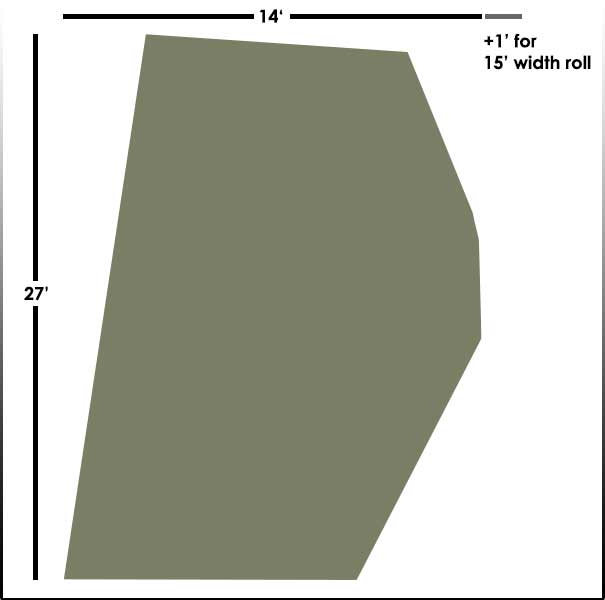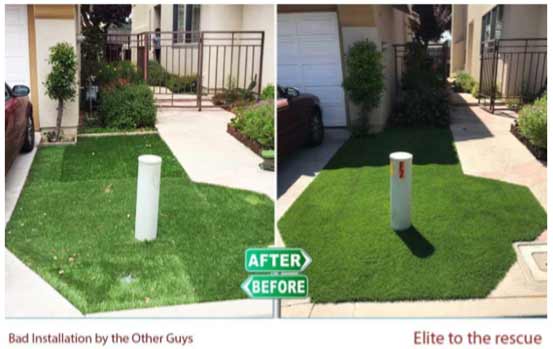How to measure Square Footage of a Yard
Items Needed:
A. Tape Measure
B. Pencil
C. Paper
D. Marking Device - flag, rock or anything solid
Measuring Square Footage for Synthetic Grass -
Square footage is determined by multiplying the longest Width by the longest Length of an area to be covered by Artificial Turf. Keep in mind that almost all turf rolls are 15' wide and we do not cut the width of our rolls, only the length. For example, if your yard is 10 feet by 15 feet, you would multiply 10 by 15 to get 150 square feet.
If you have an area that is 14' x 27', you will need to calculate how the turf will be laid out. The actual area for 14' x 27' is 378 square feet.
To cover the area with the least amount of seams, you will need to order 15' x 27' or 405 square feet to have a professional do it. If it's a D.I.Y. "Do It Yourself" Project, then you should order extra in case you make mistakes. In most cases, even professionals will order extra just in case the measurements were wrong, an accident happens, or a mistake occurs.
For odd-shaped, circular, wavy areas, please do note that some will have more remnants than others. You always want to order more than less because you want to minimize the amount of seams. There more there are, the more chances of you being able to see them post installation. Some inexperienced installers will puzzle piece the turf together, and it will look absolutely ridiculous.

Other tips:
A) Always round up, not down when calculating turf. It's always, always better to have more than less.
B) The less seams there are, the cleaner your installation will look.
C) Remants, also referred to as waste or extra, is normally diposed of by our installation crews. You should always request to keep a few pieces in case you need it for future patch work.
D) Similar to carpet, artificial grass rolls have a dye lot. So even the same exact turf, but from a different roll (with a different dye lot) will not be an exact color match.

08/14/2020 How to measure Square Footage of a Yard
07/13/2020 Artificial Turf Melting
03/14/2020 COVID-19 & Cleanliness
01/28/2020 How Do I Clean Artificial Turf?
03/08/2019 Will Weeds Grow Through Synthetic Grass?
02/27/2019 Artificial Grass Eliminates Pests
01/24/2019 Dog Run Ideas: Groundcover Options
11/30/2017 Installing a Putting Green
9/20/2017 How to Improve your Golf Game
06/31/2017 How to Find the Right Contractor for the Job
05/13/2017 Cost of Artificial Grass
04/15/2017 Pros & Cons of Turf
03/15/2017 I Can't Afford Turf! YES YOU CAN!
2/20/2017 California Drought News
01/04/2017 Have a Perfect Lawn with NO Effort!
12/22/2016 Installing Artificial Grass
11/01/16 Benefits of Artificial Grass for Dogs
10/18/2016 20 Ways to Conserve Water